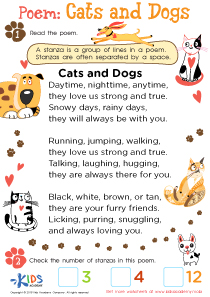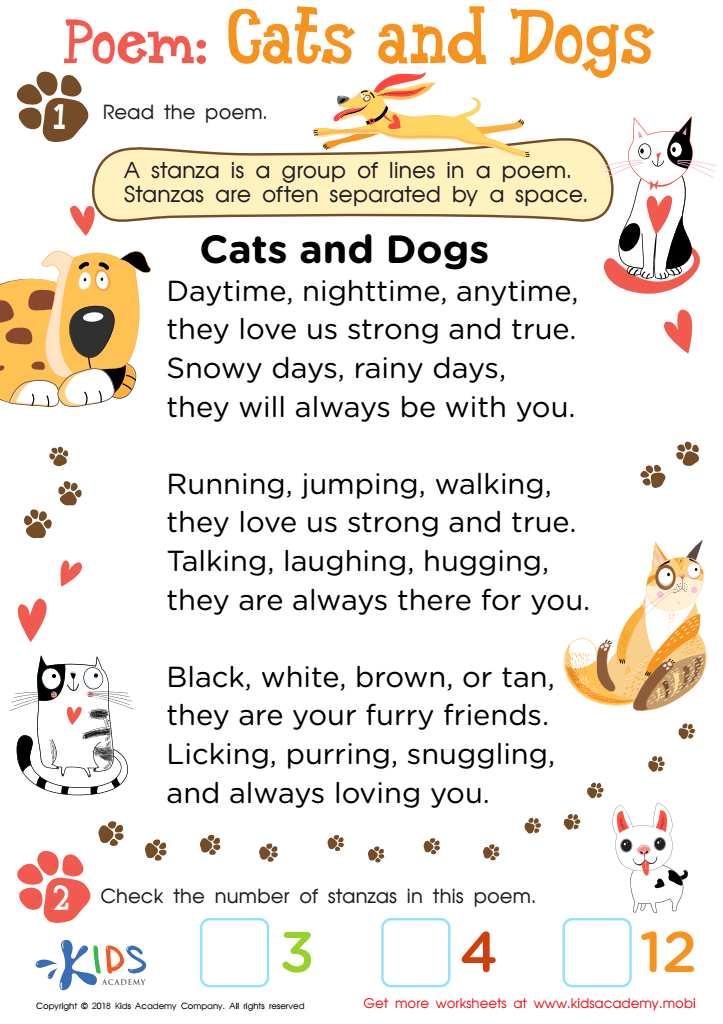Chapters, Scenes, Stanzas - Lesson for Grade 3, Chapter - Key Ideas and Details/ Craft and Structure
In the "Chapters, Scenes, Stanzas" lesson, designed for Grade 3 students under the Reading Literature Unit, scholars embark on an explorative journey into the structure of literary works. This lesson, nestled within the Key Ideas and Details as well as the Craft and Structure chapter, introduces students to the fundamental building blocks of narratives and poetry - chapters, scenes, and stanzas, respectively.
Through engaging with a specially designed worksheet on the poem "Cats and Dogs," students will learn how stanzas are used to create rhythm, emphasize themes, and build upon ideas in poetry. This exercise not only enhances their comprehension skills but also their ability to identify key details and understand the craft behind structuring literary pieces.
Understanding these elements is crucial for young readers as it aids in their ability to navigate through diverse texts, appreciate the nuances of storytelling, and develop a deeper appreciation for literature. It lays the foundational skills needed for advanced reading and analysis, fostering a lifelong engagement with literature. By the end of this lesson, students will have sharpened their analytical skills, enabling them to dissect and enjoy more complex literary works as they progress in their educational journey.

-
Activity 1 / Poem: Cats and Dogs Worksheet
The poem in this worksheet is simple and sweet, and your child will be able to relate to it easily, as it talks about an animal they probably love; cats! The poem contains 3 stanzas of four lines each. Ask your child if they know what a stanza is. If they don’t, teach them that a stanza is a group of lines in a poem, which are usually separated by a noticeable space. Now, read the poem aloud to your child and make sure they take note of the places where a stanza space is visible. Read the question at the bottom of the printout, and help them check the correct answer.


